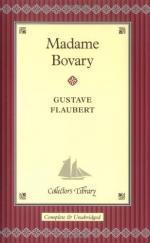The blind man, whom he had not been able to cure with the pomade, had gone back to the hill of Bois-Guillaume, where he told the travellers of the vain attempt of the druggist, to such an extent, that Homais when he went to town hid himself behind the curtains of the “Hirondelle” to avoid meeting him. He detested him, and wishing, in the interests of his own reputation, to get rid of him at all costs, he directed against him a secret battery, that betrayed the depth of his intellect and the baseness of his vanity. Thus, for six consecutive months, one could read in the “Fanal de Rouen” editorials such as these—
“All who bend their steps towards the fertile plains of Picardy have, no doubt, remarked, by the Bois-Guillaume hill, a wretch suffering from a horrible facial wound. He importunes, persecutes one, and levies a regular tax on all travellers. Are we still living in the monstrous times of the Middle Ages, when vagabonds were permitted to display in our public places leprosy and scrofulas they had brought back from the Crusades?”
Or—
“In spite of the laws against vagabondage, the approaches to our great towns continue to be infected by bands of beggars. Some are seen going about alone, and these are not, perhaps, the least dangerous. What are our ediles about?”
Then Homais invented anecdotes—
“Yesterday, by the Bois-Guillaume hill, a skittish horse—” And then followed the story of an accident caused by the presence of the blind man.
He managed so well that the fellow was locked up. But he was released. He began again, and Homais began again. It was a struggle. Homais won it, for his foe was condemned to life-long confinement in an asylum.
This success emboldened him, and henceforth there was no longer a dog run over, a barn burnt down, a woman beaten in the parish, of which he did not immediately inform the public, guided always by the love of progress and the hate of priests. He instituted comparisons between the elementary and clerical schools to the detriment of the latter; called to mind the massacre of St. Bartholomew a propos of a grant of one hundred francs to the church, and denounced abuses, aired new views. That was his phrase. Homais was digging and delving; he was becoming dangerous.
However, he was stifling in the narrow limits of journalism, and soon a book, a work was necessary to him. Then he composed “General Statistics of the Canton of Yonville, followed by Climatological Remarks.” The statistics drove him to philosophy. He busied himself with great questions: the social problem, moralisation of the poorer classes, pisciculture, caoutchouc, railways, etc. He even began to blush at being a bourgeois. He affected the artistic style, he smoked. He bought two chic Pompadour statuettes to adorn his drawing-room.




